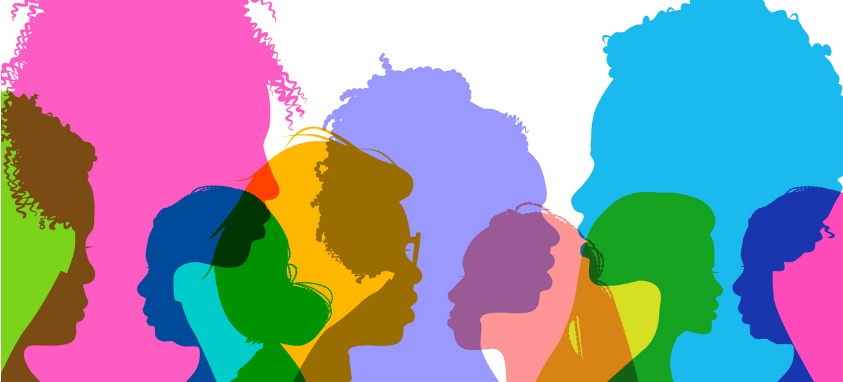Editor’s Note: Smart Meetings invited a group that come together at MPI’s Thought Leadership Summit on Diversity to tackle the issue of how planners could be part of the solution for creating a more inclusive world. How are you making strides toward a diverse world that makes everyone feel welcome?
 Antwone Stigall’s thought for the day: “Diversity is the one true thing we all have in common. Celebrate it everyday!”
Antwone Stigall’s thought for the day: “Diversity is the one true thing we all have in common. Celebrate it everyday!”
–Author Unknown
 Zoe Moore’s thought for the day: “Measurable steps towards inclusion are more than working to diversify the event design; we need inclusion and diversity of our association membership bodies and leadership.”
Zoe Moore’s thought for the day: “Measurable steps towards inclusion are more than working to diversify the event design; we need inclusion and diversity of our association membership bodies and leadership.”
 Jessica Pettitt’s thought for the day: “’Every system is exquisitely designed to produce the results it gets.’ –Frances Kendall. The meetings Industry is no different.”
Jessica Pettitt’s thought for the day: “’Every system is exquisitely designed to produce the results it gets.’ –Frances Kendall. The meetings Industry is no different.”
The Problem with True Race Inclusion and Why It Matters
The reputation and viability of the meetings industry pivots on our collective ability to make resources and opportunity equally available to people of color. Measurable steps towards inclusion must be more than diversifying event design; we need inclusion and diversity of our association membership bodies and leadership. People of color, including but not limited to Asian, Black, Latinx and Indigenous folks, are marginalized in the meeting profession as standards and opportunities are controlled by the privileged and dominant holding identities like white, cisgender, heterosexual, Christian, etc. Diversity initiatives that recruit and retain white women, perhaps gay white men and stop at “reasonable accommodations” aren’t enough to open doors for people of color in the profession. In an attempt to instill fundamental, rather than superficial change, we recommend efforts toward supplier diversity, accessible professional development, and of course, leadership buy-in.
More: The All-Inclusive Meetings Revolution
Three Steps Toward Deeper Diversity, Equity and Inclusion
1. Supplier Diversity
Real accessibility and inclusion for people of color needs to be much broader than having different looking faces on stage or sprinkled in marketing materials to be successful. For example, professionals in our industry can take action by advocating for educators, vendors, venues, CVB and DMC rosters, and the like, to specifically include minority-owned businesses. Reformulating practices that discourage or prohibit small companies from having access to or being included on preferred vendor lists is one place to start. Intentionally noticing our behaviors creates new markets and opportunities for those that have been “red lined” out of professional opportunities. By promoting the growth of all aspects of the supplier line, deep and transformational change is fostered—change that goes beyond mere window dressing.
2. Accessible Professional Development
Access to quality professional development is a key step towards creating an inclusive and diverse industry, both for the purpose of event design and fostering underrepresented professionals and businesses. We haven’t made cross-promoting professional development opportunities and showcasing people of color in all aspects of our industry a reality, yet. Underrepresented professionals deserve access to the same resources and opportunities so their businesses can blossom, and the industry can thrive. Attention to professional development can begin by addressing the staggering homogeneity of our industry. For instance, more efforts towards education of industry designations are needed. Additionally, targeted advertising and intentional invitations, coupled with efforts to keep participation costs more accessible, are sorely needed. Regardless of business size, tenure or scope, minority-led business owners need to be consciously included in all forms of industry education and development. Indeed, failing to do so may lead not just to the demise of the meetings industry’s reputation, but its vibrancy, legitimacy and relevance.
3. Leadership Buy-In
Lastly, to combat the challenges and systemic issues of Diversity, Equity and Inclusion (DEI) in the meetings and events Industry, it is essential that organizational leadership step up to the responsibility of inclusion. Noticing barriers to success for minority-owned businesses and industry talent is the first real step. Acknowledging the lack of racial diversity in leadership and membership encourages people to investigate the roots of bias, prejudice and/or discrimination (i.e. systems of higher education, financial inheritance and wealth, etc.,) while also taking action through a collective responsibility to make the meetings profession better. Unfortunately, many top-level executives believe the solution is to hire a few people of color, tokenize a diverse quality of a supplier, or over-emphasize a single diversity-focused initiative or program. These steps have proven insufficient. We recommend that our organizational leaders ask themselves the following questions:
- How many of those people of color serve as front line contributors and faces of your organization?
- How many of them have voices that matter in your decision-making process?
- Do marginalized team members feel welcomed, recognized, promoted, etc.?
- Is your leadership team ready to learn the truth of how professionals of color experience your organization and/or leadership?
In working toward foundational change, top line executives need to do the work of addressing their unconscious bias, possibly masked racism and false narratives that limit DEI efforts. For inclusion to go beyond a promotional photoshoot, DEI efforts must be infused in all aspects of an organization–weekly meetings, board retreats, publications and events. This requires transformational leadership.
Conclusion
The health and longevity of our industry relies on our ability to intentionally include our marginalized colleagues. We all have the responsibility to make these changes by noticing who is not included in leadership and membership, intentionally inviting and fostering new members of color, and opening supplier opportunities. Together, these shifts can alter the meetings industry, and do much more. The meetings industry has the potential to shift the world.




